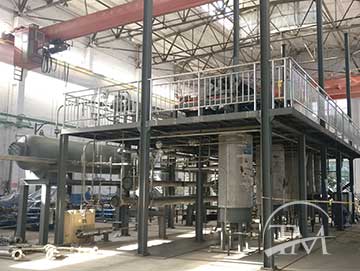Study on Supercritical Extraction and Analysis of Phospholipids from Sesame Oil Residue
Sesame oil residue was used as raw material to extract sesame phospholipid. Referring to GB/T 5537-2008 Determination of Phospholipid Content in Cereal Oil Inspection, an optimized molybdenum blue colorimetric method was used to establish the analysis method of phospholipid. The content of phospholipid in sesame oil residue was determined. The extraction pressure, temperature and time in the process of extracting sesame phospholipid by Supercritical CO2 were studied. The optimum extraction conditions were determined according to the influence of oil yield. The results showed that the optimized molybdenum blue colorimetric method was rapid and accurate for the determination of phospholipids in sesame oil residue. The optimum extraction conditions were CO2 flow rate of 10 L/h, particle size range of 20 meshes and 40 meshes, extraction pressure of 18 MPa, extraction temperature of 45 C and extraction time of 120 min. The extraction rate was 12.5%. The sesame lecithin was obtained by degumming the oil extracted by supercritical fluid extraction, centrifugation separation, dissolution with n-hexane and precipitation with acetone. The extraction rate of lecithin was 35.58%, and the purity of lecithin was 65.90%.

Key words: sesame oil residue extraction, supercritical extraction of phospholipids